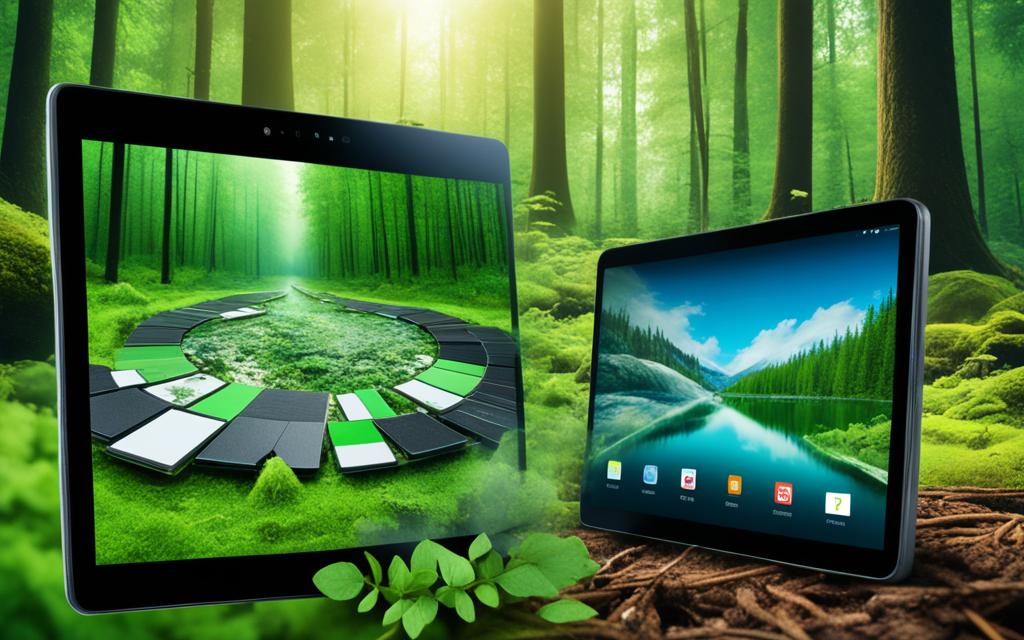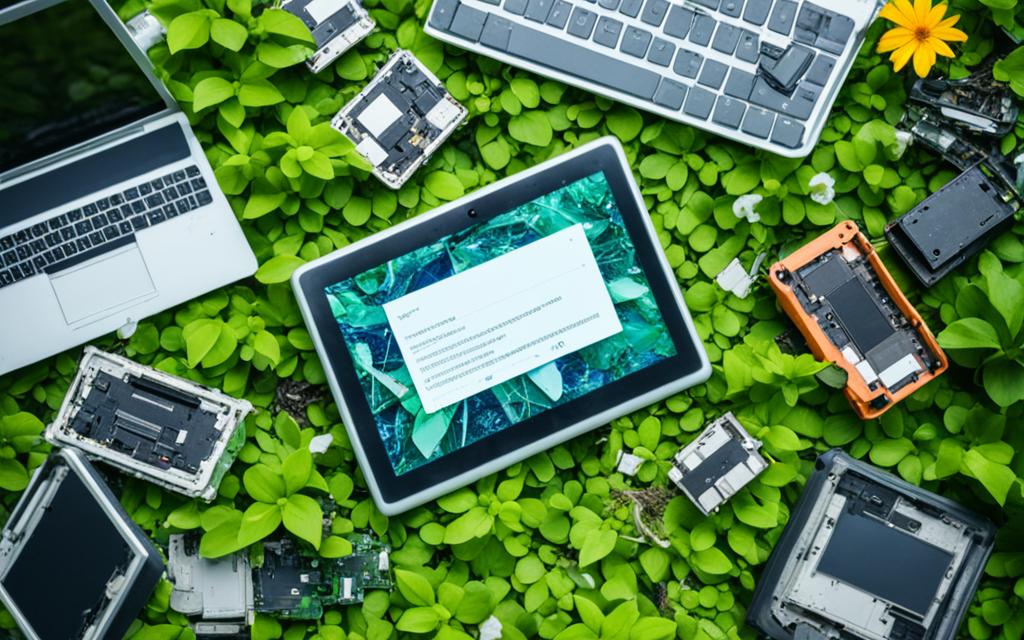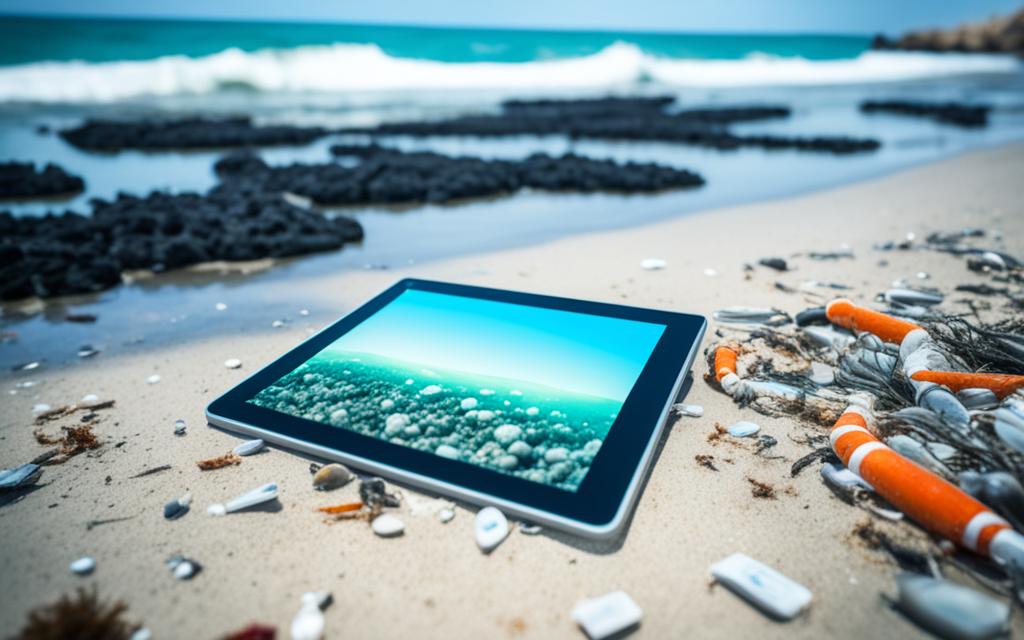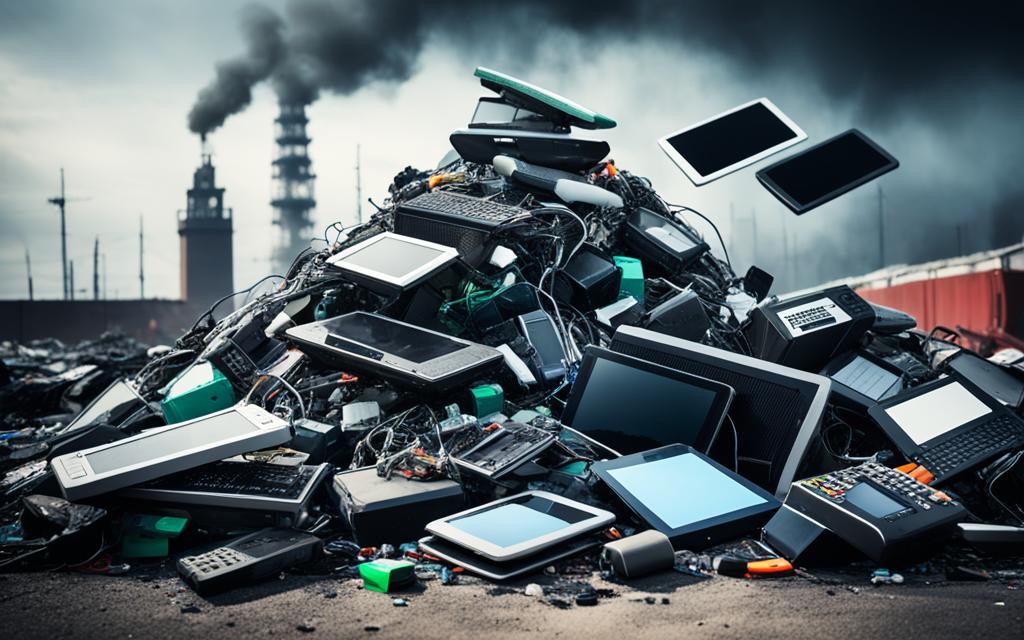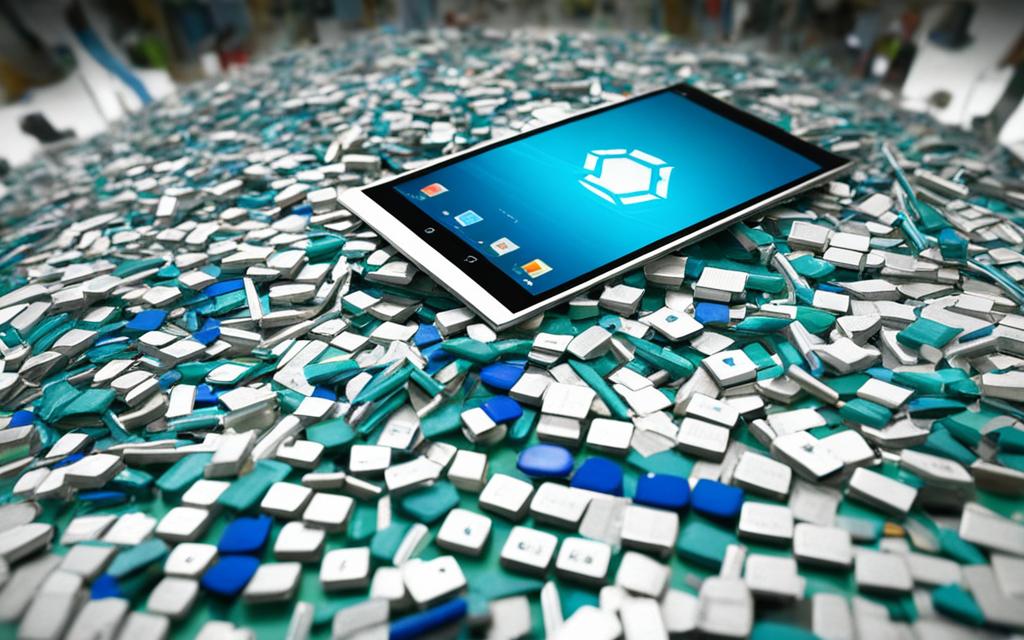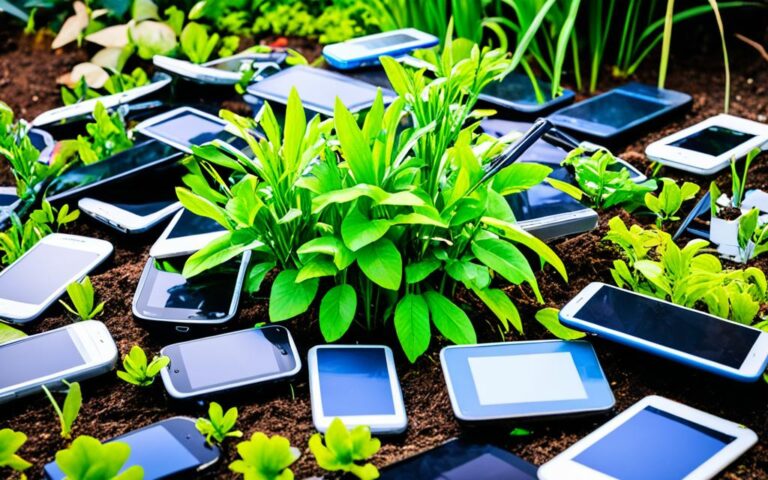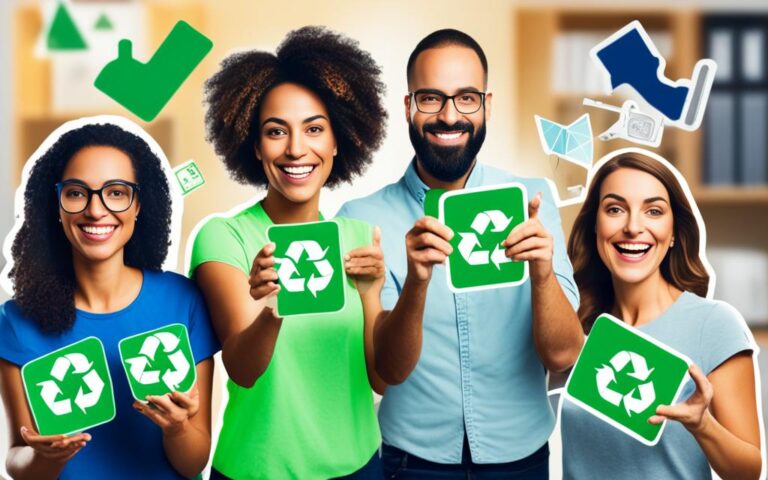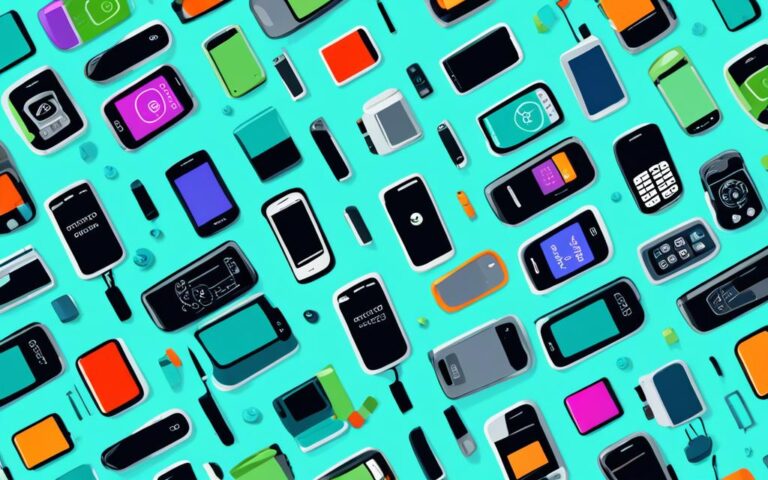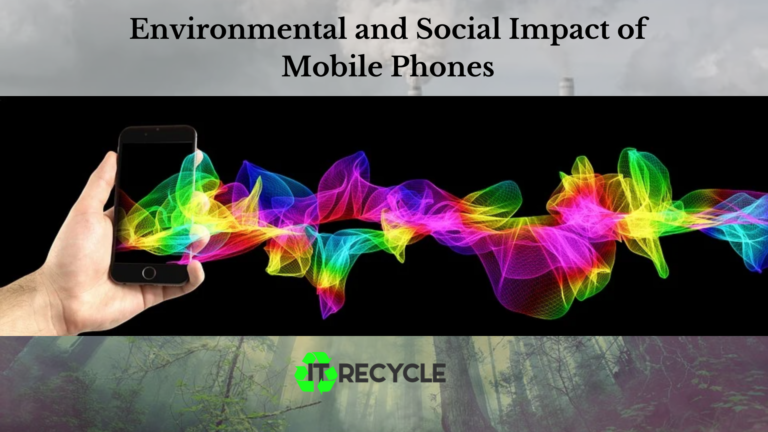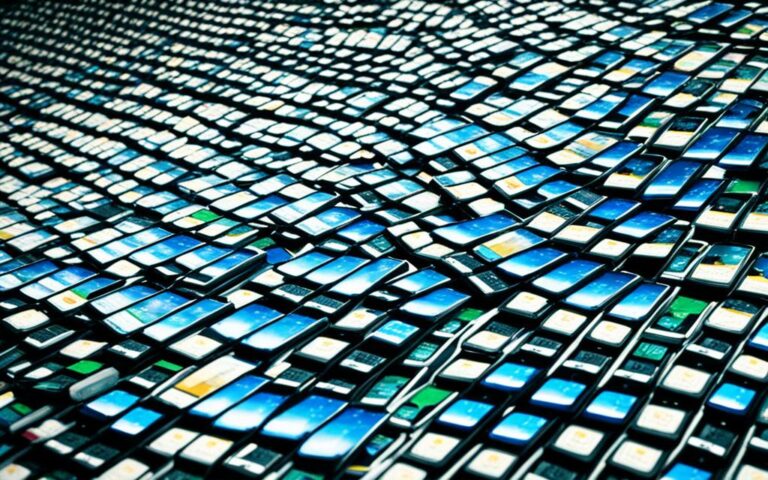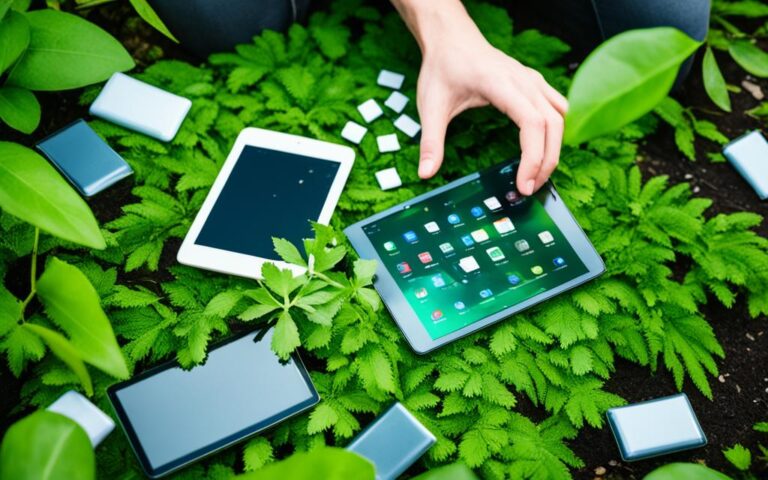The Importance of Recycling Tablets: An Overview
Tablets have become an integral part of our daily lives, serving as our portable windows to the digital world. However, with technology advancing at a rapid pace, the question of what to do with our old tablets arises. Tablet recycling is not only a responsible choice but also a crucial step towards ensuring a sustainable future.
When it comes to electronic waste, including tablets, proper disposal is essential. Recycling tablets minimizes the environmental impact associated with e-waste and contributes to a greener planet.
Why is tablet recycling so important? Electronic devices contain toxic substances and heavy metals that can harm the environment if not disposed of correctly. These substances can leach into the soil and water, contaminating ecosystems and posing risks to human health.
By recycling tablets, we can not only prevent the release of harmful substances but also reclaim valuable materials. Tablets contain precious metals like gold, silver, and platinum. Recycling allows us to extract these resources, reducing the demand for new raw materials and conserving important natural resources.
Moreover, tablet recycling plays a vital role in reducing greenhouse gas emissions. The production and manufacturing of new electronic devices require significant amounts of energy, contributing to carbon emissions and climate change. By recycling tablets, we can decrease the energy consumption and carbon footprint associated with the production of new devices.
Another significant aspect of tablet recycling is the opportunity to extend the lifespan of these devices. Discarded tablets that are still functional can be refurbished and donated to those in need. This not only reduces electronic waste but also provides access to technology for individuals who may not otherwise have the means to obtain it.
In conclusion, the importance of recycling tablets cannot be overstated. It is a small but significant step towards a more sustainable and environmentally conscious society. By recycling tablets, we can protect our environment, conserve valuable resources, and contribute to a greener future for generations to come.
The Environmental Impact of Improperly Disposed E-Waste
Improperly disposing of electronic waste, or e-waste, can have severe environmental consequences. E-waste contains toxic substances like chromium, cadmium, mercury, and lead, which can contaminate the air and waterways if they leach into the soil. The Environmental Protection Agency (EPA) estimates that there are about 60 million tons of e-waste produced globally each year. Recycling e-waste is essential to save landfill space and prevent the release of harmful substances into the environment.
Electronic waste, or e-waste, refers to electronic devices that are no longer in use or have reached the end of their life cycle. This includes items like smartphones, laptops, tablets, and televisions. When these devices are improperly discarded and end up in landfill sites, they can pose significant risks to the environment and human health.
The toxic substances found in e-waste, such as chromium, cadmium, mercury, and lead, can leach into the soil and water if they are not properly disposed of. This contamination can then enter the food chain and have far-reaching effects on ecosystems and organisms. The improper disposal of e-waste can also lead to the release of harmful gases into the atmosphere, contributing to air pollution and climate change.
The impact of e-waste on landfill space is a major concern as well. With the rapid advancement of technology and the increasing consumption of electronic devices globally, landfills are quickly filling up with discarded electronics. This not only occupies valuable space but also poses a risk of releasing toxic substances into the environment as the devices decompose and break down over time.
To mitigate these environmental risks, e-waste recycling is crucial. Recycling e-waste allows for the safe extraction and disposal of toxic substances, minimizing their impact on the environment. Additionally, recycling enables the recovery of valuable materials like gold, silver, and platinum from electronic devices, reducing the need for new resource extraction.
Proper e-waste recycling also helps conserve landfill space. By diverting e-waste from landfills and sending it to recycling facilities, valuable space can be preserved for other waste streams that cannot be recycled. This not only extends the lifespan of existing landfills but also reduces the need for the creation of new landfill sites, minimizing the environmental footprint of waste disposal.
The environmental impact of improperly disposing of e-waste is a pressing issue that requires immediate action. Implementing effective e-waste recycling programs, raising awareness about the importance of proper disposal, and encouraging manufacturers to design more eco-friendly electronic devices are crucial steps towards minimizing the environmental consequences of e-waste.
The Value of Recycling Tablets
When it comes to recycling electronic devices like tablets, there is much more at stake than just reducing electronic waste. Tablets and other electronic devices are treasure troves of valuable materials, including precious metals like gold, silver, and platinum. These devices also contain resources such as copper, aluminum, plastic, and glass, all of which can be recycled and reused.
The recycling process for tablets is highly efficient and has the potential to make a significant impact on our environment. Most electronic devices are nearly 100% recyclable, making it crucial to divert them from landfills and into recycling facilities. By doing so, we can reclaim and repurpose these valuable materials, conserving important natural resources and reducing the environmental impact of extracting and processing raw materials.
One of the key benefits of tablet recycling is the decreased demand for new raw materials. By recycling tablets and extracting valuable metals and resources, we lessen the need for virgin materials to be mined and processed. This reduction in demand helps preserve our planet’s resources and promotes a more sustainable approach to material sourcing.
The Recycling Process for Tablets
Understanding the recycling process for tablets is important in appreciating its value and impact. The process typically involves several stages:
- Collection: Tablets are collected from consumers, either through drop-off locations or collection programs.
- Shredding: The tablets are then shredded, breaking them down into smaller components.
- Magnetic Separation: A magnetic separation process is used to extract magnetic metals like nickel, cobalt, and iron.
- Water Separation: Water separation techniques are employed to separate plastics and glass from the shredded components.
- Processing Recycled Materials: The separated materials are processed further to transform them into reusable materials, ready for manufacturing new products.
Throughout this recycling process, it is important to adhere to strict environmental standards. Water used in the separation process must be purified before reuse, and proper disposal methods should be followed for any waste generated. These measures ensure that the recycling process itself has minimal environmental impact.
Recycling tablets not only addresses electronic waste but also contributes to the cyclical economy, where resources are reused and repurposed rather than discarded. By recognizing the true value of tablets and other electronic devices and responsibly recycling them, we can make a tangible difference in reducing waste, preserving valuable resources, and promoting a sustainable future.
The Role of Refurbishing and Reusing Tablets
Refurbishing and reusing tablets play a vital role in reducing electronic waste and minimizing its impact on the environment. Instead of disposing of functional tablets into landfills, they can be refurbished and donated to individuals in need. By extending the lifespan of electronic devices, we can prevent them from becoming waste too soon and contribute to a sustainable future.
There are numerous organizations that specialize in rebuilding old electronics and redistributing them to those who would otherwise go without. Through their dedicated efforts, valuable resources are saved, and individuals are provided with access to technology they may not afford otherwise.
Benefits of Refurbishing and Reusing Tablets:
- Minimizes electronic waste: By repurposing functional tablets, we keep them out of landfills and reduce the environmental impact of disposal.
- Extends tablet lifespan: Reusing tablets allows us to maximize their usefulness and minimize premature disposal.
- Conserves resources: When we refurbish tablets, we decrease the demand for new raw materials, such as rare earth metals and plastics, resulting in resource conservation.
- Reduces manufacturing pollution: By reusing tablets, we decrease the energy consumption and carbon emissions associated with manufacturing new devices.
Donation Programs for Tablets:
“Donating your used but functional tablets can make a significant impact on someone’s life. It not only helps bridge the digital divide but also reduces electronic waste. – The Environmental Protection Agency (EPA)”
The Environmental Protection Agency (EPA) provides a comprehensive listing of donation programs on their website. These programs connect individuals and organizations willing to donate tablets with those in need. By participating in these donation programs, you can contribute to a more equitable and sustainable society.
| Donation Program | Description | Website |
|---|---|---|
| Tech for Good | Redistributes refurbished tablets to underprivileged communities and educational institutions. | www.techforgood.org |
| Device Reuse Initiative | Collects used tablets, refurbishes them, and donates them to low-income individuals and organizations. | www.devicereuseinitiative.org |
| Tablet for All | Provides refurbished tablets to schools and students in need, promoting digital access and education. | www.tabletforall.org |
By donating your unused tablets through these programs, you not only help individuals gain access to technology but also contribute to reducing electronic waste, making a positive impact on both society and the environment.
The Recycling Process for Tablets
The recycling process for tablets involves several essential steps to ensure proper resource reclamation and environmental sustainability. By following these steps, valuable materials can be extracted from old tablets, reducing the demand for new resources and minimizing electronic waste in landfills.
Collection
The first step in the tablet recycling process is the collection of tablets from consumers. This can be done through various means, such as drop-off locations, recycling programs, or electronic waste collection events. It is important to encourage individuals to responsibly dispose of their tablets to prevent them from ending up in landfills.
Shredding
Once the tablets are collected, they undergo the shredding process. Shredding breaks down the components of the tablets into smaller pieces, making it easier to extract the valuable materials contained within. This step is crucial for further processing and resource recovery.
Dust Extraction
After shredding, dust extraction is performed to remove any dust or impurities from the shredded components. This ensures that the subsequent processes can be carried out efficiently and effectively, without any contamination.
Magnetic Separation
Magnetic separation is a key step in the tablet recycling process. It involves the use of magnets to extract metals like nickel, cobalt, and iron from the shredded components. This allows for the separation of valuable metals from other materials, facilitating their reclamation and reuse.
Water Separation
Water separation is another critical step in the recycling process. It is used to separate plastics and glass from the shredded components of the tablets. The water used in this process must be purified to ensure that it can be reused, minimizing water consumption and promoting sustainability.
Processing Recycled Materials
After the components of the tablets have been separated, the recycled materials undergo further processing. This involves transforming them into new products or raw materials that can be used in various industries. By processing recycled materials, the demand for new resources is reduced, leading to a more sustainable and environmentally friendly approach to manufacturing.
Conclusion
Tablet recycling plays a vital role in promoting environmental sustainability. By diverting electronic waste from landfills and recovering valuable materials, tablet recycling contributes to a greener future. It also helps conserve energy, reduce greenhouse gas emissions, and prevent the release of toxic substances into the environment.
To ensure the proper recycling of tablets, it is essential to utilize reputable recycling facilities that adhere to environmentally responsible practices. Additionally, considering the refurbishment or donation of functional tablets can extend their lifespan and benefit others in need.
Embracing tablet recycling is a small but significant step towards building a more sustainable and environmentally conscious society. Together, let’s prioritize the importance of tablet recycling to protect our planet, conserve precious resources, and create a brighter future for generations to come.
FAQ
Why is tablet recycling important?
Tablet recycling is important because it helps protect the environment by preventing electronic waste from ending up in landfills. It also allows for the reclamation of valuable materials and decreases the demand for new resources.
What are the environmental consequences of improperly disposed e-waste?
Improperly disposed e-waste can contaminate the air and waterways with toxic substances such as chromium, cadmium, mercury, and lead. This can have severe environmental consequences and harm human health.
What valuable materials can be reclaimed through tablet recycling?
Tablets contain precious metals like gold, silver, and platinum, as well as other resources like copper, aluminum, plastic, and glass. Recycling tablets allows for the reclamation and reuse of these materials.
How can tablets be refurbished and reused?
Discarded tablets that are still functional can be refurbished and donated to those in need. There are organizations that specialize in rebuilding old electronics and redistributing them to people who would otherwise go without.
What is the recycling process for tablets?
The recycling process for tablets involves several steps. First, the tablets are collected from consumers. Then, they are shredded to break down the components. Dust extraction and magnetic separation are used to remove dust and extract metals. Water separation is then used to separate plastics and glass. The recycled materials are processed and transformed into new products.
Why should I recycle my tablets?
Recycling tablets is important for environmental sustainability. It helps conserve energy, reduce greenhouse gas emissions, and prevent the release of toxic substances into the environment. By recycling tablets, you are taking a small but significant step towards a more sustainable and environmentally conscious society.

